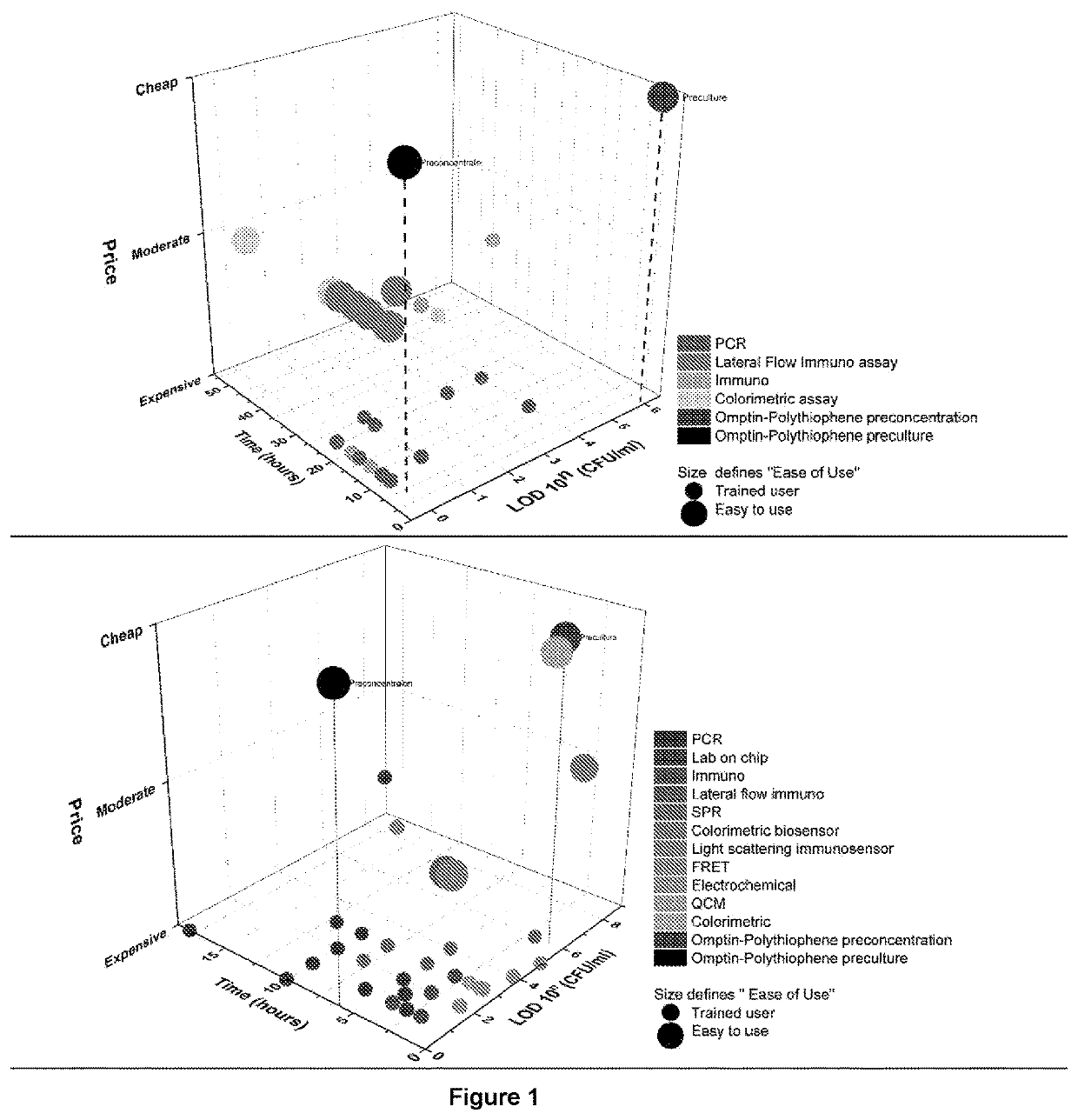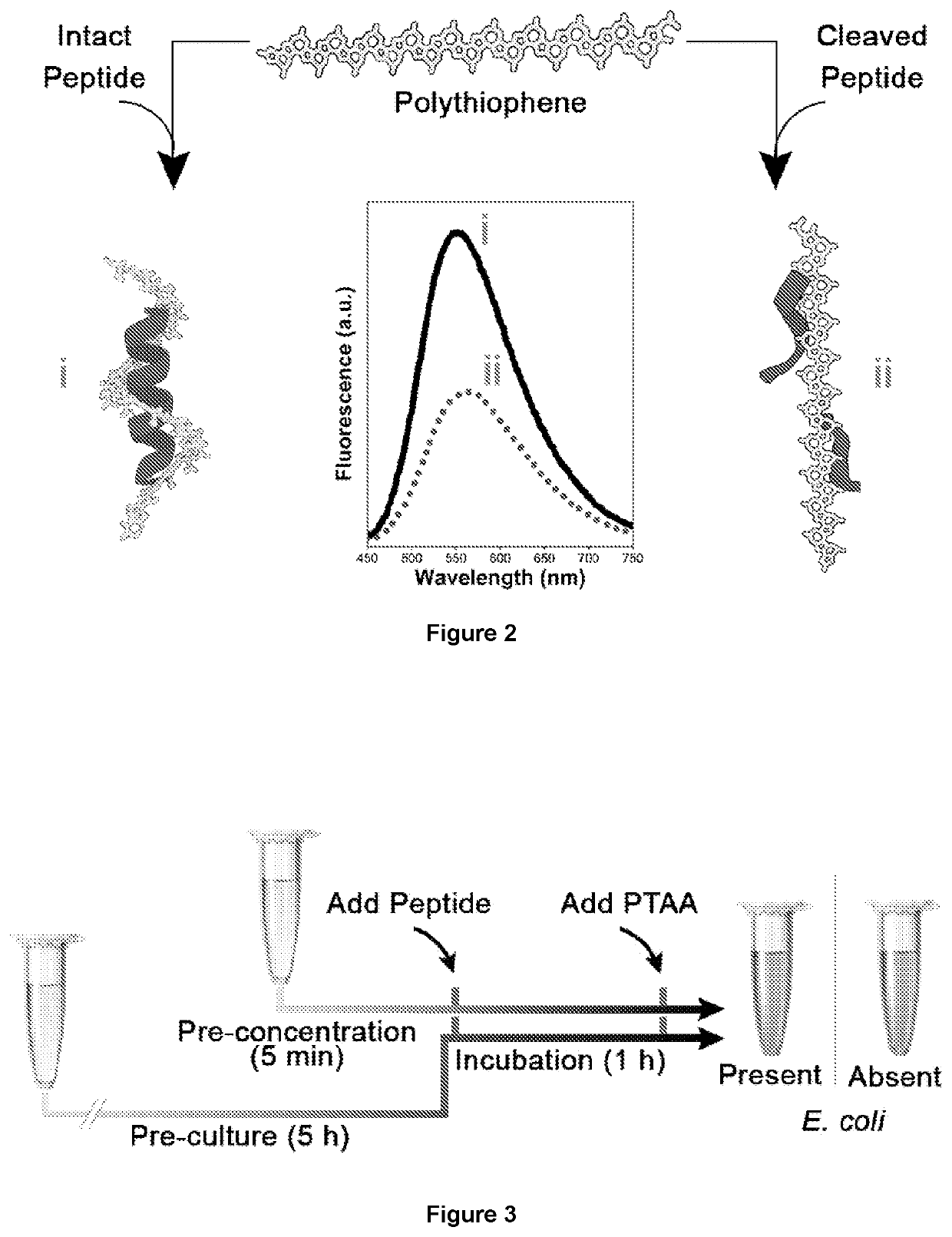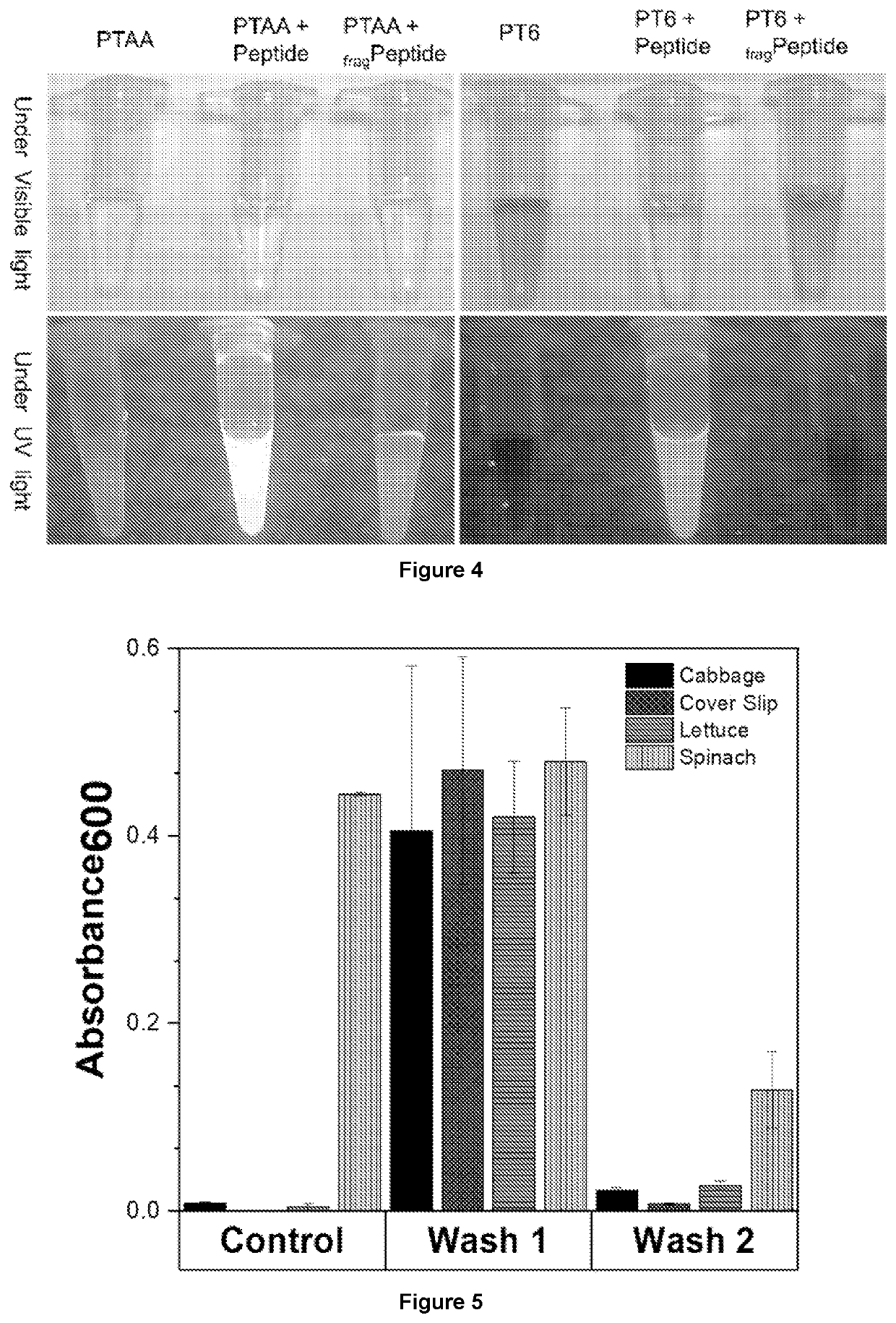Membrane protease-based methods for detection of bacteria
a protease and membrane technology, applied in biochemistry apparatus and processes, instruments, peptides, etc., can solve the problems of largely unreported, undiagnosed, and contribute to mortality
- Summary
- Abstract
- Description
- Claims
- Application Information
AI Technical Summary
Benefits of technology
Problems solved by technology
Method used
Image
Examples
example 1
[0131]Circular Dichroism Measurements of PTAA, LL37FRRV and Fragments of LL37FRRV
[0132]The following samples were prepared: (1) PTAA, (2) LL37FRRV, (3) PTAA mixed with LL37FRRV (SEQ ID NO: 7), (4) OmpT treated LL37FRRV, and (5) OmpT treated LL37FRRV mixed with PTAA.
[0133]Final concentrations of PTAA, LL37FRRY (SEQ ID NO: 7), and OmpT were 10 μg / mL, 50 μM, and 1.4 μg / mL respectively.
[0134]A high precision cell made of Quartz SUPRASIL from Hellma-Analytics with 10 mm pathlength was used to record the CD spectra. Samples were scanned from 500-190 nm using an AVIV 420 CD spectrophotometer (Lakewood, N.J., USA) with a step size of 0.5 nm. The obtained data was processed in Origin 9.0.
[0135]Polythiophenes are known to show split-type induced CD (ICD) in the π-π* transition region (320-500 nm) [Nilsson, K. P. R. Olsson, J. D. M. Konradsson, P. Inganäs, O. Macromolecules 37, 6316-6321 (2004); Yashima, E. Matsushima, T. Okamoto, Y. J. Am. Chem. Soc. 119, 6345-6359 (1997)]. CD spectra of PTA...
example 2
[0142]PTAA-Peptide Fluorescence and Optical Absorption Measurements
[0143]Stock solutions of PTAA were prepared at a concentration of 0.1 mg / mL in a reaction buffer containing 20 mM sodium phosphate buffer whose pH was adjusted to 8 using HCl. LL37FRRY peptide stock solutions were prepared in the reaction buffer at a concentration of 500 μM. To study the effects of LL37FRRY on PTAA's optical absorption and fluorescence intensity, different concentrations of LL37FRRY (150-6.25 μM) were added to PTAA (10 μg / mL). All PTAA and LL37FRRY mixing were carried out in the reaction buffer. All optical absorption and fluorescence measurements were carried out on 100 μL samples in a flat bottom 96 well plate using a TECAN Infinite® 200 PRO(Switzerland). Optical absorption measurements were collected from 330-650 nm. Fluorescence scans were collected by exciting the samples at 420 nm and their emission spectrum recorded from 450-750 nm. Since the fluorescence intensity increase for PTAA saturated ...
example 3
[0152]E. coli Detection in Water
[0153]A membrane protease-based (OmpT-PTAA) method of the invention was investigated using water samples comprising E. coli. All wild type E. coli strains express the omptin protease OmpT. Polythiophene acetic acid (PTAA) was used as a reporter polymer and LL37FRRY was used as a peptide that targets OmpT.
[0154]Four different strains of E. coli (Table 6) and different concentrations (108-106 CFU / mL) of each strain were used for water sample testing. E. coli BL21 cells act as negative control since they do not have OmpT on their outer surface. E. coli LEMO cells have overexpressed OmpT on the surface while K12 and J96 are natural strains of E. coli with OmpT expressed on the outer membrane surface.
TABLE 6Strains of E. coli used for sensingE. coli Presence of StrainOmpT on surfaceNegative ControlBL21NegativePositive Control-2LEMOOverexpressedTested for indicating possibleK12Positivefaecal contaminationUrinary tract infectionJ96Positive
[0155]In order to i...
PUM
| Property | Measurement | Unit |
|---|---|---|
| Fraction | aaaaa | aaaaa |
| Time | aaaaa | aaaaa |
| Time | aaaaa | aaaaa |
Abstract
Description
Claims
Application Information
 Login to View More
Login to View More - R&D
- Intellectual Property
- Life Sciences
- Materials
- Tech Scout
- Unparalleled Data Quality
- Higher Quality Content
- 60% Fewer Hallucinations
Browse by: Latest US Patents, China's latest patents, Technical Efficacy Thesaurus, Application Domain, Technology Topic, Popular Technical Reports.
© 2025 PatSnap. All rights reserved.Legal|Privacy policy|Modern Slavery Act Transparency Statement|Sitemap|About US| Contact US: help@patsnap.com



